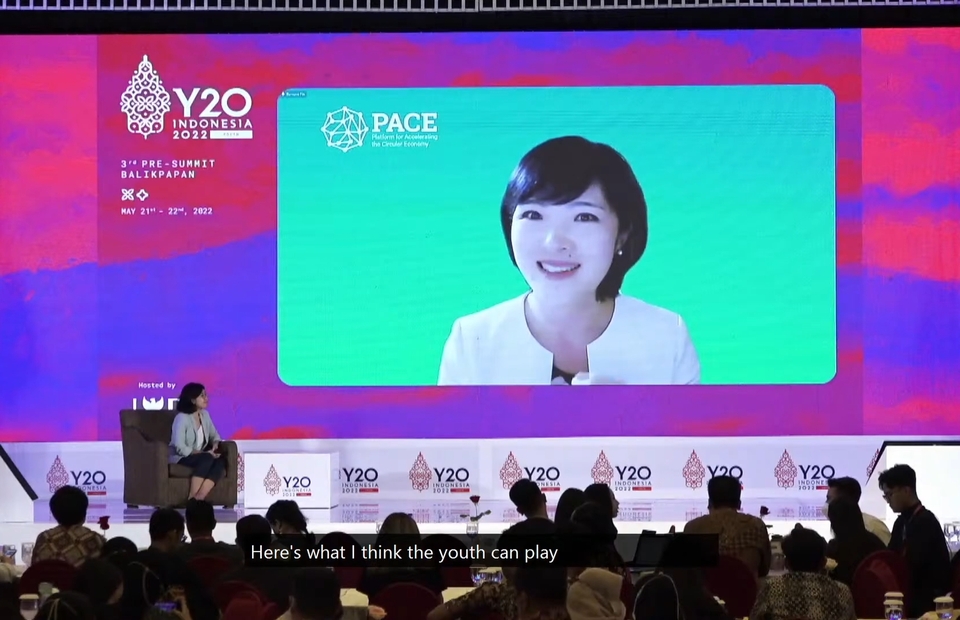
Governments, particularly those of G20 countries, should start including circularity in their public procurement guidelines and pursue international collaborations on cross-border emission reductions to promote a circular economy, according to an expert at the Youth 20 or Y20 Indonesia forum.
The world rests on a linear economic model. Producers extract the natural resources to make a product, which the consumers will use before throwing it away as waste. This take-make-dispose model only leads to excessive waste generation, and so it is about time that we embrace the circular economy.
Unfortunately, there is still a lack of enabling policies for a circular economy, Ke Wang, the program lead at the Platform for Accelerating Circular Economy (PACE), said at the Y20 Indonesia 2022 Third Pre-Summit over the weekend.
This lack thereof may attribute to the fact that governments already have their own policy priorities. For the Global South: economic development. Whereas the Global North, which tends to possess a bit more capacity to think of ecological challenges, has made tackling climate change as its priority, according to Ke Wang.
Circular products and services are also often not market-competitive, largely because their supply chain is still much less developed compared to their linear counterpart.
“This is where governments can help. Governments are such large buyers. They have the power to change the picture,” Ke Wang said when addressing the Y20 third pre-summit in Balikpapan virtually on Sunday.
“If the government starts to include circularity in their public procurement guidelines, it can bring powerful market demands and can pull circular supply chains to scale up quickly and become more competitive,” Ke Wang added.
Such domestic measures, however, are still not enough to drive the shift from linear to circular. There is still a need for international collaborations. Ke Wang called for countries to not only focus on slashing emissions within their borders.
“About half of the world’s greenhouse gas emissions come from materials, and a circular economy can help address that [by] cutting material footprint and carbon footprint in the value chain. But that goes beyond country borders as supply chains are global,” Ke Wang told the conference.
“What European and North American countries do might lead to greenhouse gas savings in Asia or Latin America. That is why G20 countries need to work together on international mechanisms that can help encourage the cross-border footprint reductions,” she said.
While there might be no “one-cut recipe” for G20 economies on driving a circular economy as each country is different, what the bloc does can potentially lead to a large-scale impact.
“G20 countries are such large economies. Even a small step forward in each country can accumulate an impact on a huge scale,” Ke Wang said.
Power of Youth
Raising people’s awareness about the circular economy is also key to driving the shift from linear, and this is where youths play an important role. According to Ke Wang, better awareness of the circular economy will not only lead to behavioral changes but can also eventually convince policymakers.
“Politicians listen to their people. The younger generation has demonstrated themselves to be pivotal to raising public awareness on climate change,” Ke Wang said.
The two-day Y20 Indonesia 2022 third pre-summit in Balikpapan focused on building a sustainable and livable planet. Discussions revolved around two subthemes, namely safeguarding nature and promoting a circular economy.
Source from Jakarta Globe
Original News HERE

































